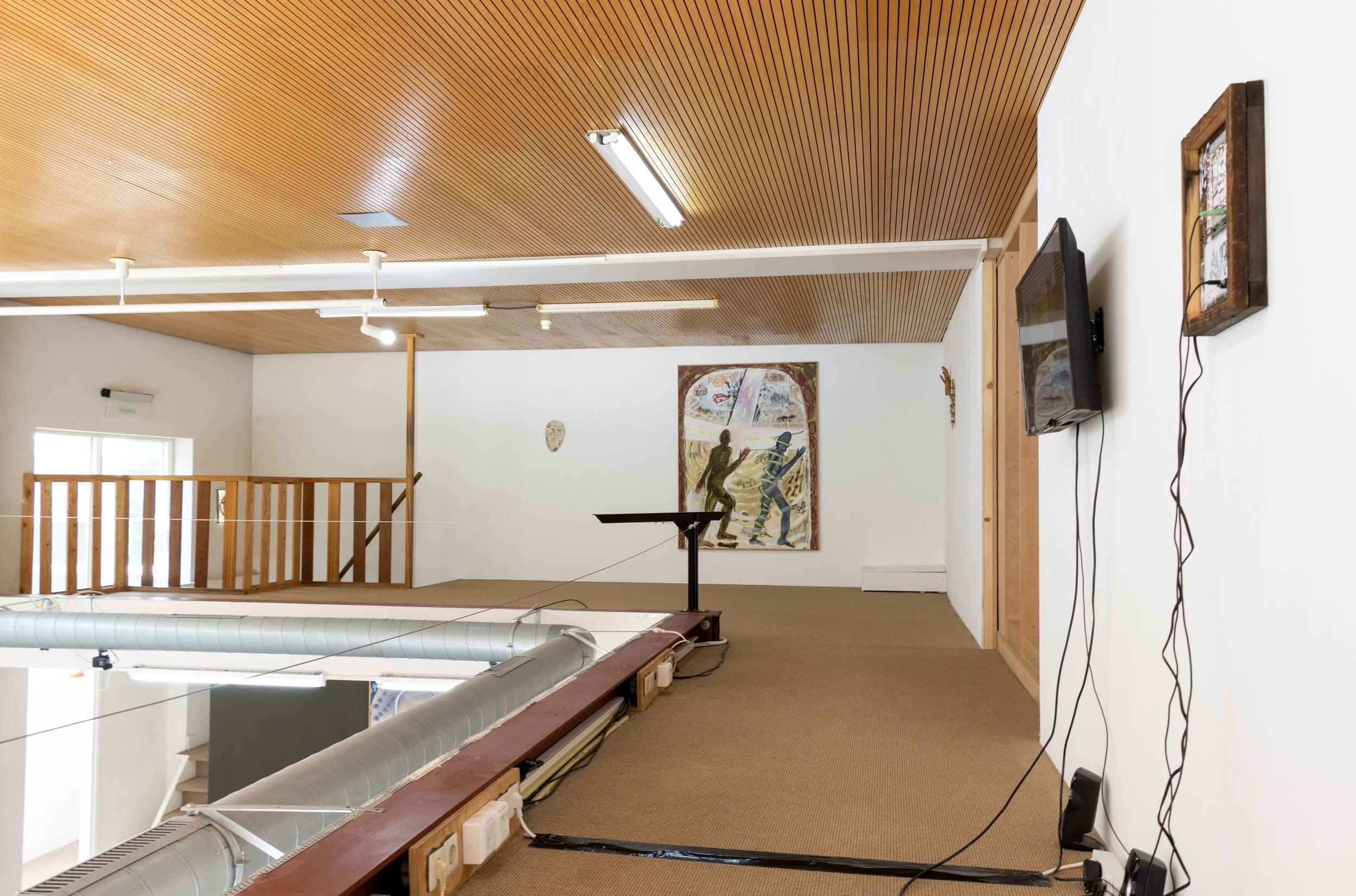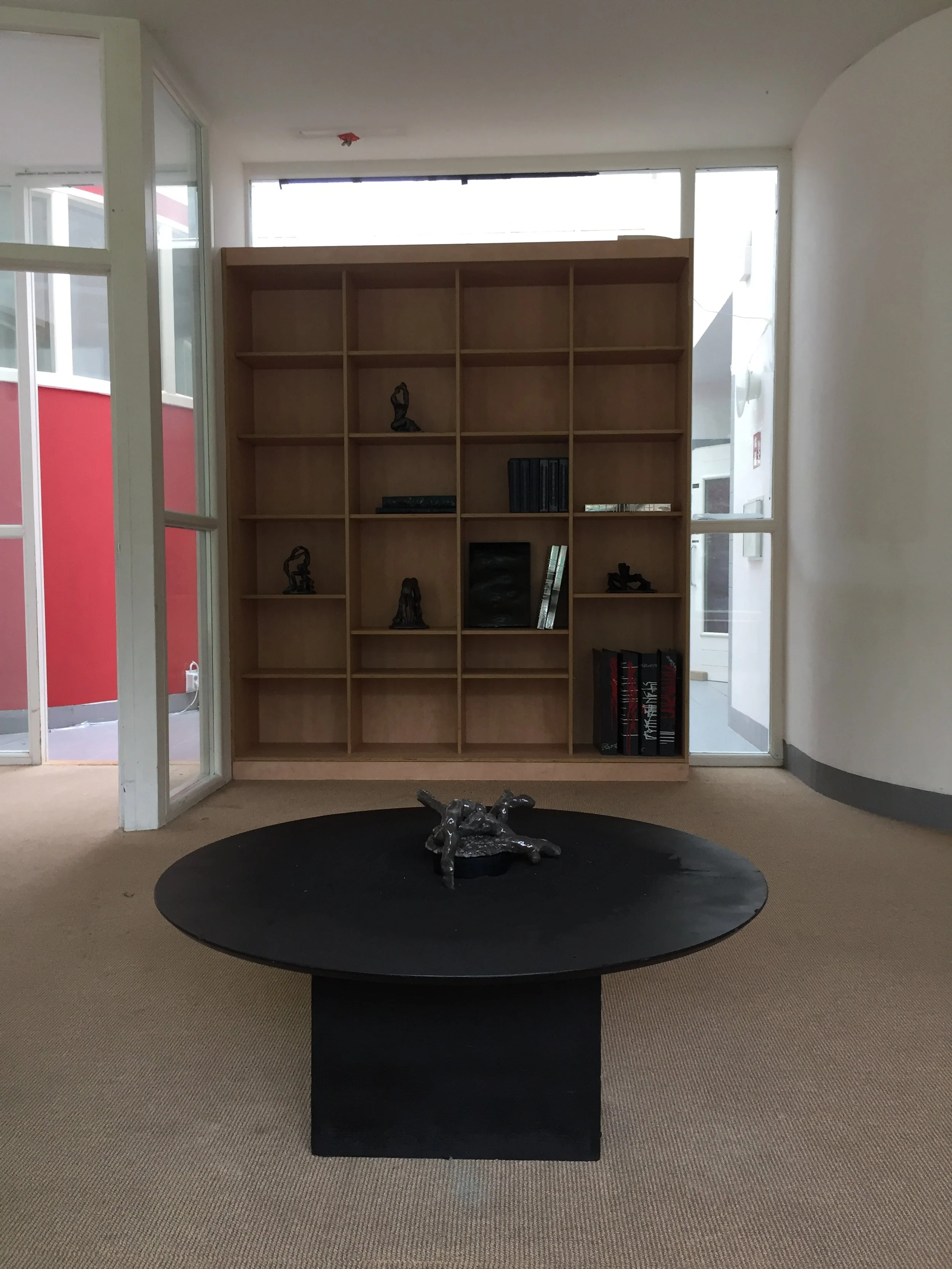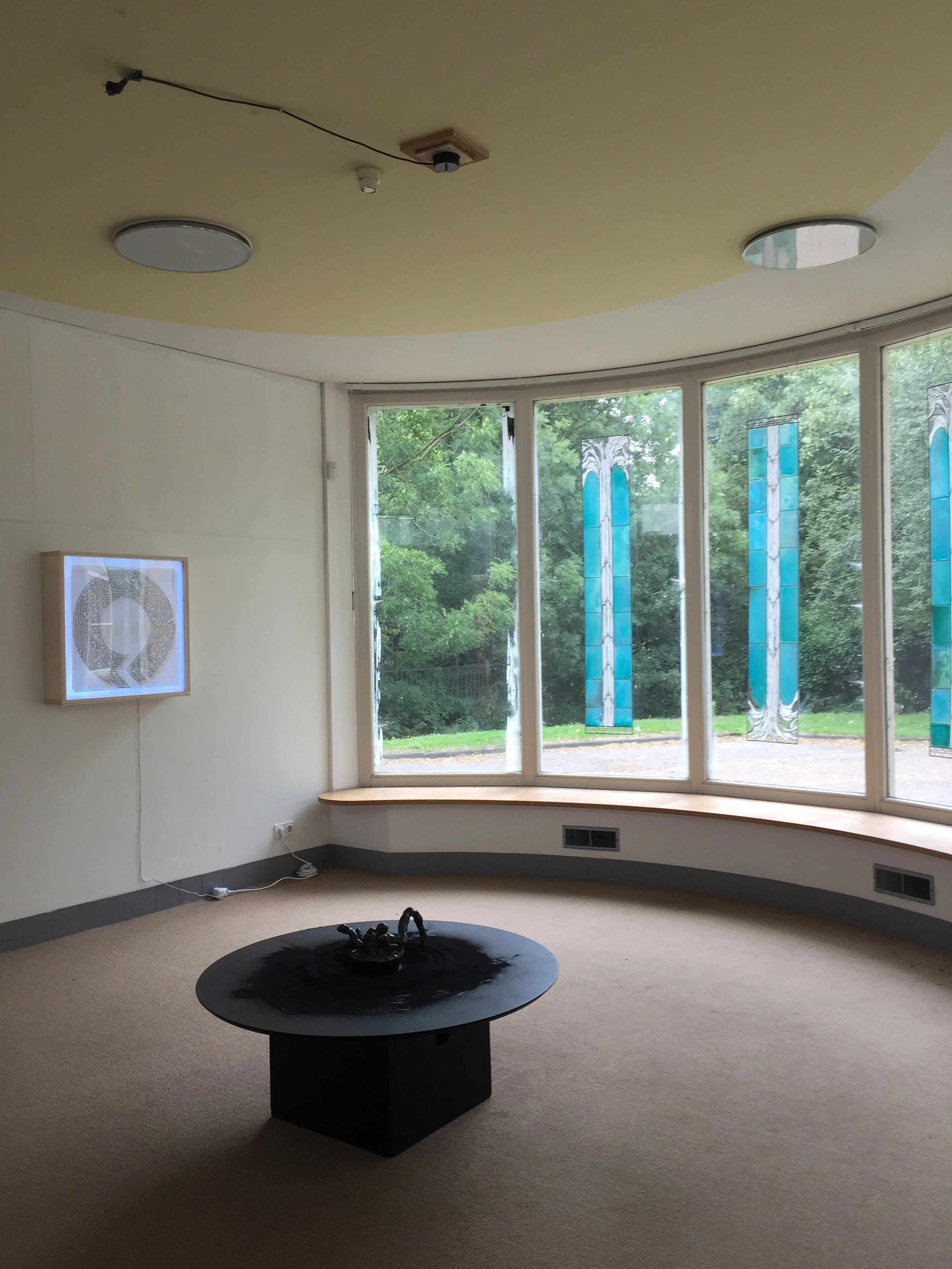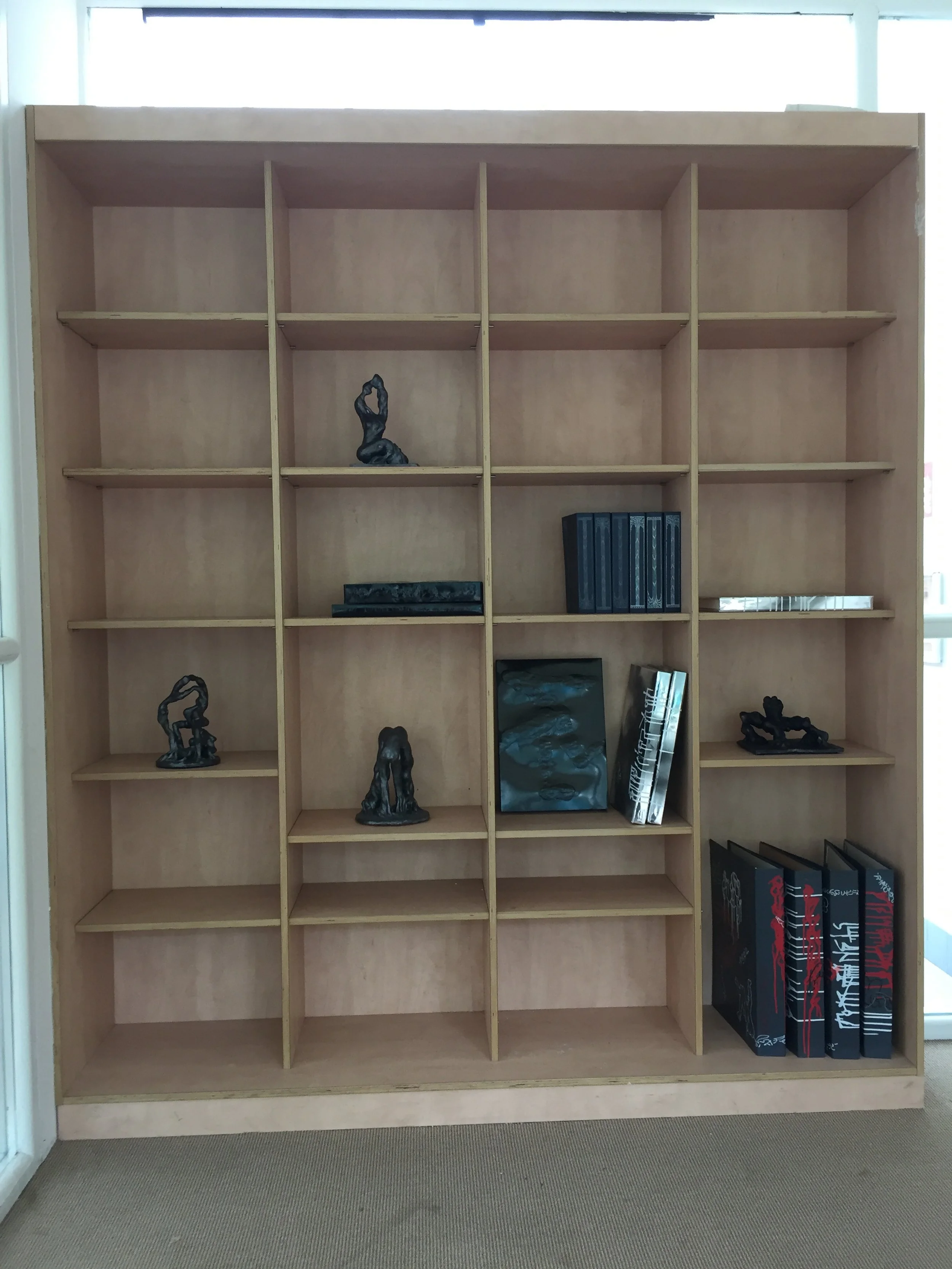Atemporal Hiccup
Bin Koh
Emmett James Palaima
Shani Leseman
Sungeun Lee
Jochem van den Wijngaard
Text by Nick Reilly
The hiccup is a harmless malfunction, a gentle reminder that the procedures running
throughout our body are prone to error, wherein it’s usual functioning is interrupted
(it is difficult to do anything when you have hiccups other than try to get rid of them).
Being trapped in a fit of hiccups brings to the surface biological temporalities within
our bodies (the breath, the heartbeat, the circadian rhythm) and freezes us in a time
determined by them. The same goes for when we forget something important or say
something unintentionally, the infamous Freudian slip. A spanner is thrown into the
works of a machine that usually ticks along smoothly. Just as with a hiccup,
a temporality emerges in the slip, a delay occurs due to our conscious intention
being interrupted by another process at work (the unconscious). This delay may be
short, shaving only a few seconds off from our intentions—in which case we just
laugh off the slip and proceed to say the intended word—or we may ruminate upon it
for the rest of our lives (e.g. spending hours and hours on the psychoanalyst’s couch
wondering why it is one often says the word magnet instead of mother). In either
case, the ‘error’ always gives us pause, an interruption that prompts reflection.
The human is dependent upon and made up of a complex of biological and
psychological processes that are error-prone, ranging from a harmless slip of the
tongue to full psychotic breakdown. Whilst this capacity for malfunction may cause
suffering, it is also what marks subjectivity. The incomplete structure of language that
is particular to human culture is in many ways an inefficient and leaky system.
Whilst the linguistic signs we depend upon facilitate communication amongst us,
they also allow for misinterpretation (for example a word may conjure up an entirely
different set of connotations for me than it does for you, stirring up completely
different emotions). Despite this inefficiency that makes us error-prone, it is also
what enables our capacity for reflection at all; interruption and reflection can not be
separated.
The threat of artificial intelligence replacing humans or turning upon us emerges
from an ideology—one which has been around for much longer than ChatGPT—
which makes an equivalence between efficiency, speed and thought. Whilst the idea
of an ‘efficient’ society running on pure, objective communication may have some
appeal (wherein what one says cannot be misunderstood and in which we never
say something embarrassing accidentally) it would also be no society at all; signals
would replace signs and reflex would replace reflection.
Atemporal Hiccup stays with the interruption. Through a series of interventions,
the participating artists ask the audience to do the same. To pause, reflect and look
afresh at the machines running in the background of our lives to the other side;
where there is a pause or a slip, where there is a delay. In doing so, Atemporal
Hiccup asks us to grasp these moments not as a failure but as a site for meaning
and novelty, a space in which misunderstandings may occur alongside shared
projects of imagination.
De Apotheek
Buiksloterweg 7A
1031 CC Amsterdam Noord
(achterzijde gebouw/backside building)
www.deapotheek.org
Instagram:
@kunstplatform_de_apotheek














